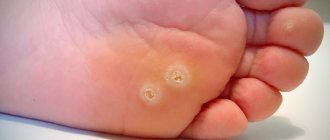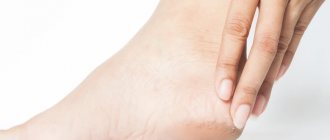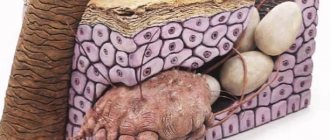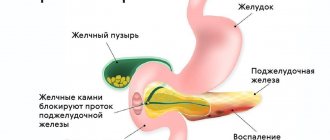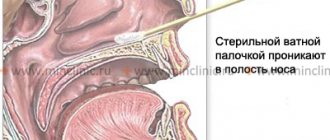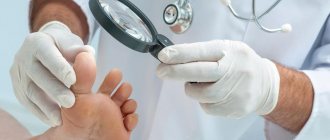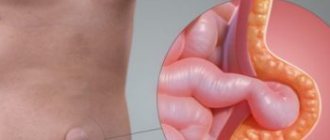The only cause of calluses on the toes is rubbing from the walls and straps of shoes. But there’s a lot of trouble from this! How to avoid calluses and what to do if your fingers are already bleeding? Now we will tell you about it.
- Calluses on the toes: what they are and where they “live”
- Patches for calluses on fingers: pros and cons
- TOP 5 products for protection against calluses
- External remedies - creams and ointments for dry calluses
- Treatment of calluses on the toes with folk remedies
- Laser removal of calluses on fingers
- “Anti-callus” shoes: 5 rules for living without calluses
- Conclusion: what to do with calluses
Calluses on the toes: what they are and where they “live”
Before you deal with calluses on your toes, you need to determine their type. We will conditionally divide them into three groups: dry, wet and core.
Dry calluses are hard, compacted areas on the skin. They are formed when the skin is rubbed against the walls of shoes for a long time and methodically. This is a kind of protection of the delicate layers of skin from friction.
Wet calluses are blisters on the skin filled with fluid. Compared to dry keratinized calluses, they are more painful. Particularly “pleasant” sensations arise when such a callus bursts. The liquid flows out, and an inflamed “mush” forms in place of the callus. And it's dangerous! Firstly, an infection can get into the skin lesion. And secondly, if you don’t free your foot from shoes or protect a vulnerable spot, the burst callus will be erased into “meat.”
A callus is a type of hard callus that appears if a dry callus is left untreated. But there is one nuance: the callus is called that because it has a root. It digs into soft tissue and causes excruciating pain when walking and pressing.
Calluses can be located in different areas of the toes: on top (on the phalanges and joints), on the side, on the lateral rollers of the big toes, in the spaces between the toes and below, on the pads.
Causes and symptoms of corns
In addition to the main symptom (a noticeable curvature of the phalanges), others appear over time and as the disease progresses.
- Inability to extend a finger without assistance;
- Pain;
- The appearance of regular corns and calluses;
- Dropped arches of the feet;
- Dislocations of the metatarsophalangeal joints;
- Lameness.
If, based on your symptoms, you suspect you have a hammertoe deformity, then we insist on contacting an orthopedic doctor at our clinic for timely diagnosis of the pathology.
There are few reasons for the development of corns:
- Incorrectly selected shoes;
- High arch of the foot;
- Chronic predisposition;
- The second toe is too long;
- Hallux valgus;
- Flat feet;
- Excess weight;
- Pre-existing diseases (arthrosis, diabetes, psoriasis).
Patches for calluses on fingers: pros and cons
What is the most popular remedy for calluses? That's right, a band-aid! The patches are advertised, they can be bought both at the pharmacy and in almost any store, and they also cost mere pennies. But are they as good as they say in advertising? Let's find out!
Plasters can be divided into three groups: bactericidal, therapeutic and special for wet calluses.
Germicidal patches
An accessible and cheap option, but bactericidal patches do not treat calluses, but rather serve as a safety cushion between the painful area and the wall of the shoe. Well, they protect calluses (especially wet ones) from bacteria. They will be very useful if:
- Your wet callus has burst and you need to get home;
- You know your weak spots on your feet and want to protect them from friction;
- You've slightly rubbed your toe and are afraid that the callus will burst.
Therapeutic plasters
Callus patches help get rid of calluses. They contain inclusions of salicylic acid and other active ingredients that soften dry calluses and rough skin on the fingers and feet. They are suitable if:
- You have dry calluses on your fingers;
- The skin on the toes is rough and tough;
- Toes constantly suffer from friction in shoes.
Compeed patches for wet calluses
Special patches for wet calluses from the Compeed brand resemble elastic oval “pancakes”. This patch forms a shell over the wet callus, which protects against pain from friction and contact with the walls of the shoe, isolates the wound from dirt, dust and germs, and also heals the inflamed area. This is ideal if:
- You rubbed your toes until “bubbles” formed;
- The wet callus has burst and hurts like hell;
- You don't want to change the patch often - Compeed stays on the skin for 24 hours.
Pros and cons of patches
Regardless of whether the patches are medicinal or bactericidal, they have advantages and disadvantages.
Benefits of callus patches
If it weren't for the benefits, patches wouldn't be such a popular option for protecting against calluses. And that's what's good about them.
- It is cheap. Plasters can be purchased individually from 1 ruble per piece.
- Easy to use: stick it on and go!
- They take up little space: you can carry them with you in your cosmetic bag or wallet.
- They provide targeted protection and come in different sizes and shapes: you can seal the phalanx of the little finger with a plaster or wrap the entire thumb.
Disadvantages of callus patches
Adhesive plasters also have disadvantages. We have identified two:
- The patch is a one-time product; after quickly “wearing out” the old patch, you need to stick a new one;
- Moisture can cause the adhesive base of the patch to peel off, which is not very convenient in hot weather or when your feet sweat excessively.
Indications and contraindications
Before using a silicone patch for calluses on your feet, you should read the instructions, including indications and contraindications for its use.
The patch should be used in the following cases:
- as soon as the callus is discovered;
- if the formation is accompanied by discomfort and pain;
- at risk of a crack;
- to protect the lesion from infection.
Contraindications for use are the presence near the callus:
- cracks;
- open wounds;
- scratches and bruises;
- papillomas and moles.
Components that impregnate the patch can cause negative reactions on open wounds - pain, burning, swelling, etc.
TOP 5 products for protection against calluses
Another way to prevent calluses on your toes is to use special tools. They will not cure existing calluses, but will protect painful areas from friction and pressure, and will also prevent the walls of the shoes from “callousing” the skin of the fingers.
Finger tube “Cut it yourself”
The protective tube is made of cotton fiber and has a strip of soft silicone inside it. These finger pads will cover a potential or already rubbed callus and protect the vulnerable spot from mechanical damage. The tube can be divided into lengths suitable for your fingers.
Silicone finger caps
Silicone toe caps are suitable for protecting all toes except the big toe. They consist of hypoallergenic medical silicone, which is impregnated with mineral oil. The impregnated gel not only protects the skin from damage, but also moisturizes it.
Gel anti-callus socks
These silicone half-toes are cup-shaped pads that fit over all the toes and also cover the “bones” of the big and little toes. They protect the metatarsal part of the foot and toes from pressure and friction in the shoe. These socks do their job especially well in closed heeled shoes.
Bursoprotectors
Bursoprotectors with an interdigital septum protect the inflamed “bone” and the second finger, if it is hammertoe, from friction.
Silicone correctors for 5 toes
5 toe correctors physically separate all five toes from each other and protect the delicate skin between the toes from friction.
External remedies - creams and ointments for dry and wet calluses
If the appearance of calluses cannot be avoided, they can be cured. There are special creams and ointments for this. These remedies can be aimed at softening rough and dry calluses or healing and disinfecting wet calluses. Choose for yourself!
Remedies for dry calluses actively soften the skin, including keratinized calluses. After using them, it will not be difficult for you to remove roughness without damaging the deeper layers of the epidermis. And this is also the prevention of core calluses!
Foot cream “Tiger Eye – Ortho, dry calluses”
This cream is rich in natural substances, so in addition to combating dry calluses, it will help tidy up the skin of the feet. Just look at its properties:
- Nourishes the skin, protects against cracks;
- Relieves inflammation;
- Removes bacteria from feet.
This cream softens rough skin in 1-3 days, after which it should be carefully removed with a pumice stone or a special scraper.
Foot cream “Versana” with lemon and lanolin
This cream, among other things, has bactericidal and anti-inflammatory properties. It also saturates the skin with vitamins A, B, P and C. A small bonus is the presence of a dispenser in the bottle!
Cream-balm “Corn”
This product is a delicate peeling that eliminates calluses and corns. It contains the enzyme keratolin, which removes dead skin cells and stimulates the “birth” of new ones. Unlike acids and other aggressive peels, keratolin does not injure the skin. The skin becomes smooth, soft and fresh. And a whole complex of natural vegetable oils and extracts will help to consolidate the effect.
The second group of products is more suitable for combating wet calluses. The components of these creams and ointments heal wounds and injuries, relieve inflammation and have an antibacterial effect.
Healing cream “Active mumiyo” with tea tree and wheat germ oils
This cream heals all kinds of damage to the skin: burst calluses, wounds, scratches, cracks and microtraumas. It also restores the skin during chafing and diaper rash.
Foot gel "Doctor Belyakov - Ginseng Plus"
Actually, this is a gel for foot fungus, but its active ingredients, ginseng and elecampane roots, will also cope well with the consequences of wet calluses:
- Soften and rejuvenate the skin of the feet;
- Heal microcracks and wounds from burst calluses;
- Prevents the appearance of corns.
Gel-balm for feet “OvisOlio – Sheep oil”
This balm gel can be used even if calluses are not your problem. It has a complex effect on the condition of the legs:
- Has an antiseptic, healing and anti-inflammatory effect;
- Provides skin cells with a “killer” dose of tonic substances;
- Fights foot fungus;
- Has a deodorizing effect.
What is hyperhidrosis
Hyperhidrosis is increased sweating, which leads to the formation of skin pathologies. An area with constant high humidity and a temperature comfortable for the growth of bacteria is created in the foot area. This causes an unpleasant odor and peeling of the skin in large areas.
The main reasons for the development of hyperhidrosis:
- disorders of the thyroid gland;
- wearing uncomfortable shoes with poor ventilation;
- the use of low-quality creams based on synthetic bases that form an airtight film on the surface of the skin.
The main problem with hyperhidrosis is thick and swollen skin. It is difficult to process using hardware methods. To relieve the main symptoms, it is recommended to sprinkle the damaged areas with baby powder or talcum powder.
To treat hyperhidrosis, alcohol-based antiseptic formulations are used. The treatment can be done in a beauty salon. After hygienic treatment, the feet are wiped and treated with talcum powder. Prepared feet are processed using hardware methods using cutters with a hardness of 100-280 grit. After completing the procedure, the master will definitely give recommendations.
General recommendations:
- use a deodorant recommended by a specialist;
- wear shoes and clothes made from natural materials;
- take good care of your shoes;
- Perform regular foot hygiene procedures at least twice a day.
- Pay special attention to the condition of the insoles.
Treatment of calluses on the toes with folk remedies
You can get rid of calluses and corns on your toes using folk remedies. All of them are available, cheap and will probably be found in every home. Let’s immediately make a reservation that these products are only suitable for combating rough skin, dry calluses and corns.
Garlic - apply to steamed dry calluses
Pre-steam your feet in a warm bath. Then prepare the garlic “medicine”: squeeze out the juice or grate a couple of cloves of garlic on a fine grater to make a paste. Soak gauze in juice or apply garlic paste on it and apply to steamed calluses overnight. Apply these compresses to dry calluses for 7-10 days.
Onion - to soften rough skin on the feet
Cut the onion and rub its juice onto a dry callus or rough area of skin. Bandage your leg and walk with this lotion for several hours. After 10 days, the callus will soften and can be easily removed, and the rough skin will become thin and tender.
Lemon + aspirin - getting rid of calluses in 15 minutes
Prepare the paste: Grind 6 aspirin tablets with lemon juice. Apply the mixture to a rough callus or corn and then wrap your foot in plastic wrap. Apply a hot compress on top - cloth, gauze or towel soaked in hot water. Leave the compress on for 15 minutes, then remove the film, rinse off the paste and rub the rough skin with a pumice stone.
Chamomile baths - for pain relief
Dry calluses occur in places of continuous friction, and this is not only rough skin, but also pain. Warm baths with chamomile decoction will help soften the skin and relieve pain. The decoction is prepared as follows: pour 4 tablespoons of dry chamomile with 1 liter of boiling water and let the decoction brew. After this, take a bath and steam your feet in it for 30 minutes. As a result, the skin will become softer, and pain in injured areas will go away.
Vinegar – fight against calluses + disinfection
Soak a cotton swab in table vinegar and apply it to the rubbed area of skin for a couple of hours. Secure the compress with a bandage. Vinegar will not only soften rough spots, but also disinfect the skin. If the callus is small or medium, vinegar will take care of it in a couple of days!
Aloe + laundry soap - night compresses
Squeeze the juice from the aloe leaf and mix it with laundry soap. In the evening, before going to bed, apply the resulting mixture to dry calluses, cover with plastic on top and leave overnight.
Treatment methods for corns
The treatment prescribed by the orthopedist depends on the degree of development of the deformity.
Conservative treatment
- Wearing properly fitted shoes and insoles;
- Foot massage;
- Physiotherapy;
- Using devices to minimize friction (gel separators, cotton swabs, patches);
- Ointments and anti-inflammatory drugs to relieve pain.
Surgery
The first type of operation is not a one-time relief from pathology; in most cases, after a while, the deformity begins again. The operation involves removing part of the bone growth or protrusion. The toes return to the correct position.
Full recovery is possible with radical treatment, but such an operation is complex, requires a highly qualified doctor, and rehabilitation is long and painful. The operation consists of complete correction of the bones, ligaments and muscles of the foot.
Anesthesia during surgery will depend on the severity of the operation: both local and complete are possible. Treatment can be either open, that is, through one large incision, or percutaneous, during which instruments are inserted into small incisions.
Laser removal of calluses on fingers
Laser can be considered a last resort in the treatment of calluses. Most often, this procedure is resorted to by those who have developed a dry callus, and in its place a core has formed. In this case, it will not be possible to cure the callus on your own, because it has already taken root in the soft tissue.
Before laser callus removal, you should consult a dermatologist. The doctor will conduct an examination, give recommendations and possibly prescribe tests. Laser callus removal is usually indicated if:
- dry callus has developed into a core;
- they cause pain;
- inflammation has begun in the area of the callus;
- rough skin has grown too much;
- cracks form on the callosal area (which may “bleed”)
- calluses look unsightly.
What are foot cracks?
Cracks in the epidermal layer appear on the outer skin and can extend deep into the dermis. Heels are a typical localization area.
Main causes of cracks
- leg injuries and mechanical damage;
- improperly performed pedicure;
- lack of regular skin care;
- dry skin;
- diseases of the digestive system;
- past fungal diseases;
- diabetes;
- taking antibiotics;
- psoriasis;
- dehydration of the body;
- strict diet without supervision by specialists;
- thyroid disease;
- hormonal changes, taking hormonal medications.
The appearance of cracks in the legs can be seasonal or chronic.
A pedicurist will be able to cope with cracks, but an integrated approach requires the help of an endocrinologist, dermatologist, gastoenterologist or immunologist. The master recommends specialists from whom you can get advice.
According to statistics, 70% of cracks are infected with fungi. It is recommended to visit a dermatologist, do tests and identify the type of fungus. This will help you choose a course of treatment for quick and safe skin recovery.
The specificity of fungal cracks is a green or brown tint. A pedicurist immediately sends a client with such a pathology to dermatologists. It is not possible to cure the infection yourself without determining the type of fungus at home. The help of a cosmetologist will not help either - removing the area without an integrated approach can lead to the spread of the disease.
“Anti-callus” shoes: 5 rules for living without calluses
The main rule of life without calluses: choose the right shoes! She is the one who rubs your fingers. Even if calluses arise due to deformation of the joints of the fingers, these “bumps” and curvatures are still rubbed by the shoes.
Choose shoes by size
Make sure that the shoes do not “sag” on your feet. The shoes should fit tightly around the foot, but not press on.
Say "No!" narrow shoes
Prefer shoes with a wide toe to shoes with a tapered toe.
Choose shoes made from soft materials
Hard shoes are more likely to cause blisters on your feet than soft ones. Therefore, try to wear shoes made of soft materials: natural or artificial leather, suede or textiles.
Is it possible to wear socks or footwear? Put it on!
Yes, some shoes, for aesthetic reasons, do not tolerate wearing socks and heels. However, if you have the opportunity to wear them, take it. They will serve as an additional layer between the leather and the walls of the shoe.
Make sure your toes don't fall out of your shoes onto the ground.
If you wear open-toe shoes, make sure your toes do not extend beyond the sole. Otherwise, they will “slap” on the ground, and calluses from the straps or walls of the shoes will appear on the phalanges of the fingers.
How to prevent skin problems in the future
A patch for calluses on the heel and other areas will help speed up recovery and relieve discomfort. But it is easier to prevent the formation of calluses than to treat the consequences. Preventive measures include the following:
- regular pedicure, daily foot hygiene;
- moderate skin hydration;
- wearing comfortable shoes of your size with a hard back and wide toe;
- changing and cleaning shoes several times a season;
- therapeutic exercises, foot massage;
- preventing the risk of microtrauma;
- refusal to wear wet socks and gloves.
The listed preventive measures will reduce the risk of callus formation (wet, dry, core). If trouble cannot be avoided, it is advisable to immediately begin treating the calluses and should not cut them off.
Conclusion: what to do with calluses
Prevent the appearance of calluses: the right shoes + products for protection against calluses Protect calluses from injury in shoes: bactericidal patches + products for calluses Treat wet calluses: Compeed patches + healing creams and ointments Soften dry calluses: ointments + patches with salicylic acid + folk remedies (baths, compresses, lotions) Eliminate calluses: consultation with a dermatologist + laser removal Eliminate the causes of calluses: silicone correctors for feet
Types of dressing materials
You need to choose a patch for calluses on your hands and feet taking into account the type and degree of skin damage, the purpose and composition of the impregnation. A properly selected dressing heals the wound, protects it from pathogenic microorganisms, cleanses and disinfects the skin, and promotes healing.
Manufacturers produce silicone, salicylic and liquid patches. The first ones are made of silicone gel, glued to any area of the body, and are invisible when worn. The latter contain salicylic acid, which softens the rough layer of skin. In addition, such a callus plaster for core calluses has an antiseptic and antibacterial effect. Liquid products are compositions that form a protective film on the damaged area. It does not interfere with air exchange and accelerates healing.

